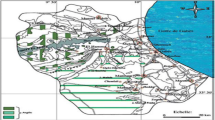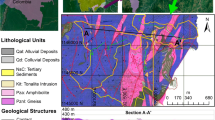Abstract
Metakaolin used as a SCM in concrete is obviously a very good tool to improve the resistance against acid and alkali attack too. Even if, finally, the mechanisms are not fully understood until now, lower mass loss (acid attack) or lower expansions (ASR) are showing their efficiency.
Metakaolin, burnt by using relatively pure natural kaolin clays, contains Al2O3 and SiO2 only with a ratio of approx. one. The question is: Are there any other clays maybe also in mixtures which are suitable for use as an admixture for concrete or even as a binder?
This research work has a strong regional reference. Three clays from Lower Lusatia were selected. The clays and a wide range of mixtures too were burnt at different temperatures (between 600 to 700 °C) to find out the “best” results for such materials. The mixing process has also the background to eliminate fluctuations in the compositions of the clays. A continuous working rotary kiln with a continuous supply of clay materials was used for the production of calcined clay samples. Using this equipment, the rate of heating and the duration of stay of the material under almost practical conditions can be varied. Mineralogical compositions, measured before and after heating, confirm the formation of amorphous phases already under relatively low temperature conditions in dependence on the clay mineral species and the mixing relations. Reactivity (activity index and solubility in alkaline solutions) of each sample were determined and mortar bars were produced. In dependence on their reactivity parameters the so produced calcined clay samples influence mechanical and durability properties of concrete structures. The aim of this research project is to produce concrete bars with such calcined clay as a SCM and store them under extreme conditions in some of the Lusatian lakes.
Access this chapter
Tax calculation will be finalised at checkout
Purchases are for personal use only
Similar content being viewed by others
References
He, C., et al.: Pozzolanic reactions of six principal clay minerals: activation, reactivity assessments and technological effects. Cem. Concr. Res. 25, 1691–1702 (1995)
Sabir, B.B., et al.: Metakaolin and calcined clay as pozzolans for concrete: a review. Cem. Concr. Res. 23, 441–454 (2001)
Fernandez, R., et al.: The origin of pozzolanic activity of calcined clay minerals: a comparison between kaolinite, illite and montmorillonite. Cem. Concr. Res. 41, 113–122 (2011)
Thienel, K.-C., Beuntner, N.: Effects of calcined clay as low carbon cementing materials on the properties of concrete. In: Proceedings of the 8th International Conference: Concrete in the Low Carbon Era, University of Dundee – Concrete Technology Unit, pp. 504–517 (2012)
Beuntner, N., et al.: Efficiency of calcined clay in cementitious systems. In: Proceedings of the 12th International Conference on Recent Advances in Concrete Technology and Sustainability Issues, Prag, pp. 413–424 (2012)
Burri, C.: Petrochemical calculations on equivalent basis (Method by Paul Niggli), Birkhäuser Verlag, Basel, Stuttgart, pp. 47–103 (1959). (in german)
EN 450-1:2012, Fly ash for concrete - Part 1: Definition, specifications and conformity criteria, German version, Beuth Verlag, 34 pp (2012)
Author information
Authors and Affiliations
Editor information
Editors and Affiliations
Rights and permissions
Copyright information
© 2018 RILEM
About this paper
Cite this paper
Huenger, KJ., Gerasch, R., Sander, I., Brigzinsky, M. (2018). On the Reactivity of Calcined Clays from Lower Lusatia for the Production of Durable Concrete Structures. In: Martirena, F., Favier, A., Scrivener, K. (eds) Calcined Clays for Sustainable Concrete. RILEM Bookseries, vol 16. Springer, Dordrecht. https://doi.org/10.1007/978-94-024-1207-9_33
Download citation
DOI: https://doi.org/10.1007/978-94-024-1207-9_33
Published:
Publisher Name: Springer, Dordrecht
Print ISBN: 978-94-024-1206-2
Online ISBN: 978-94-024-1207-9
eBook Packages: EngineeringEngineering (R0)




